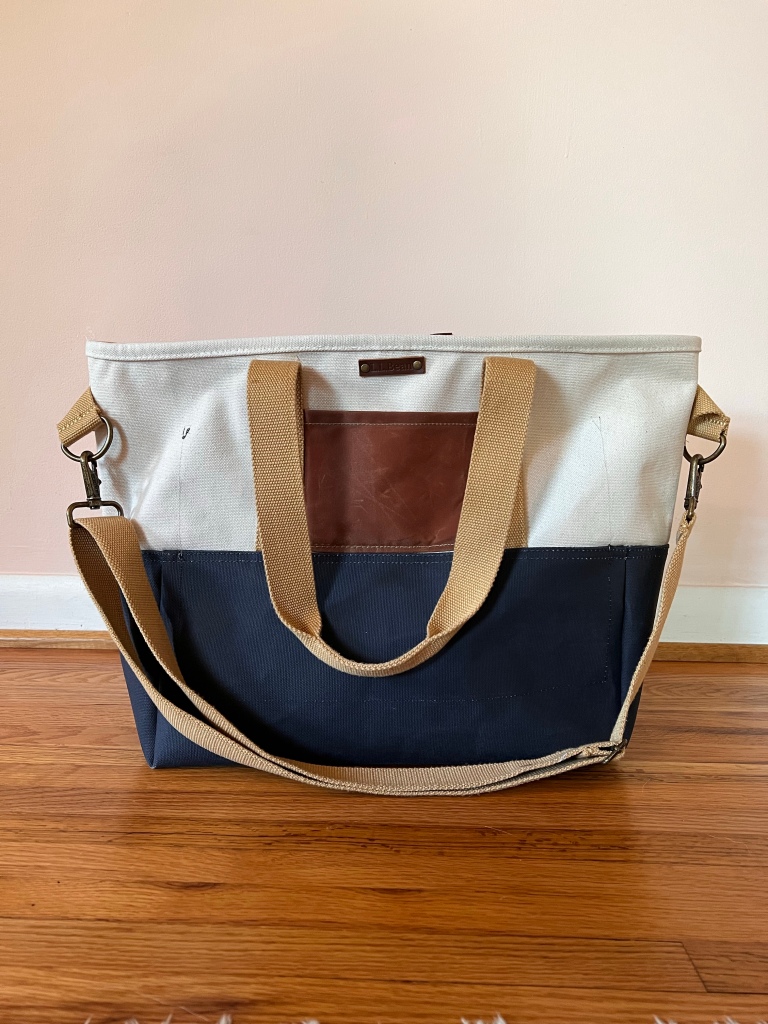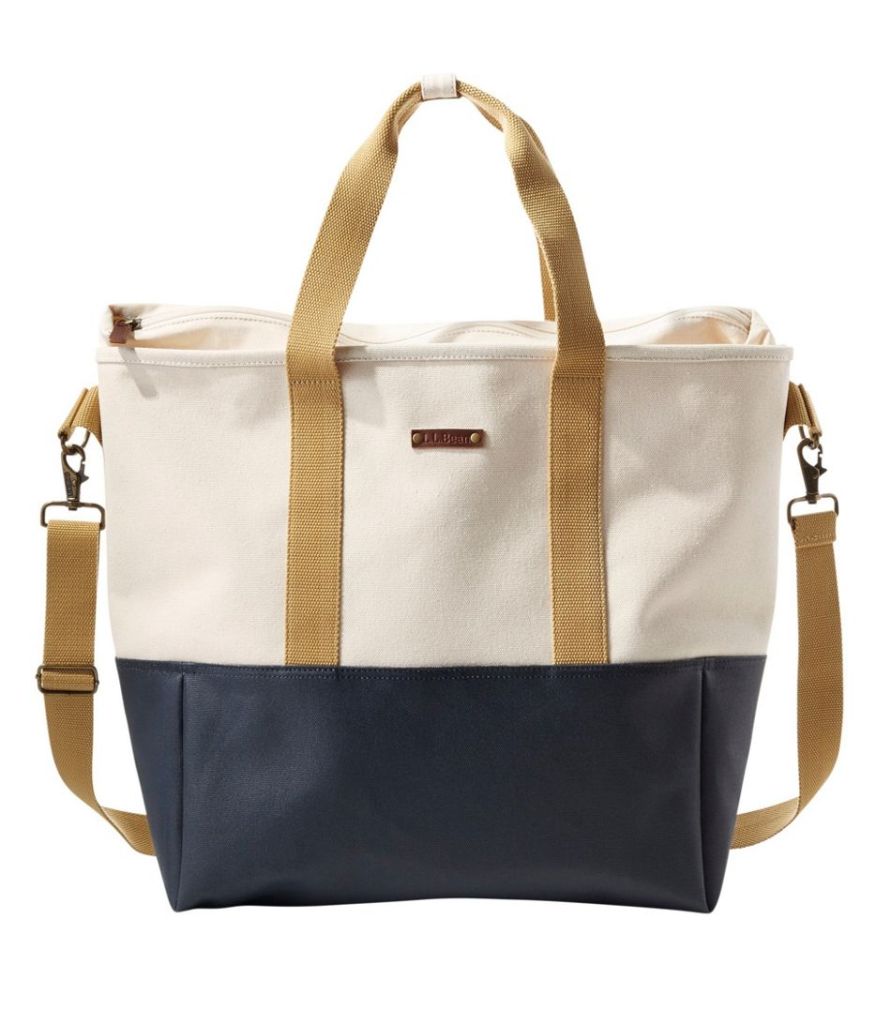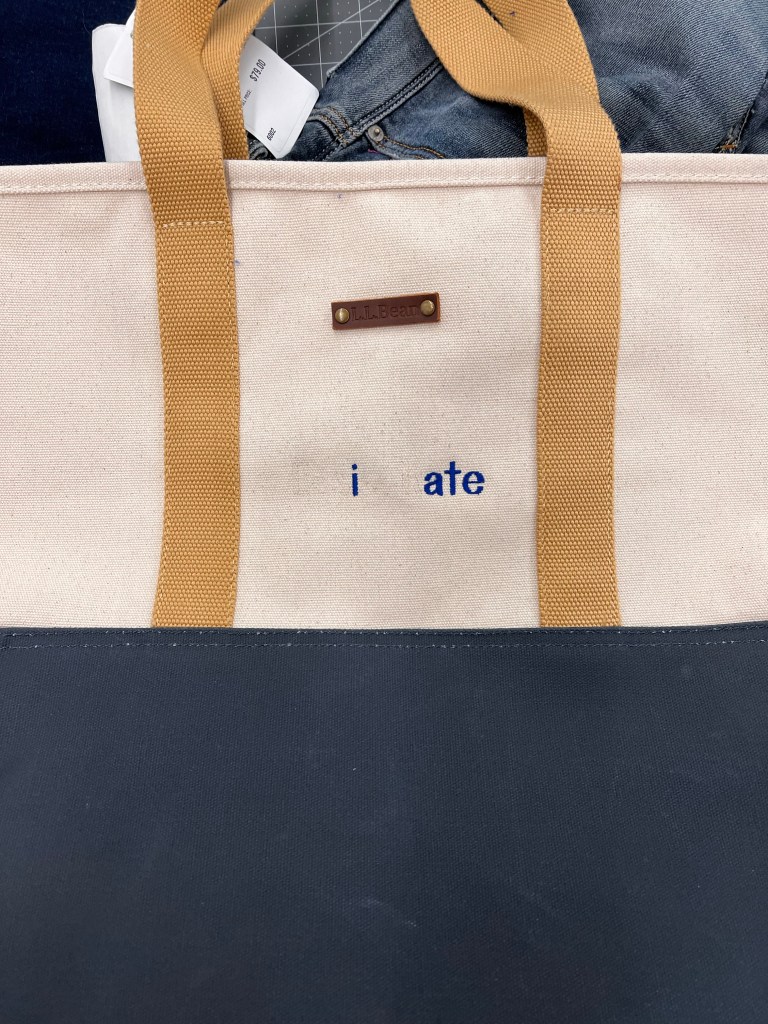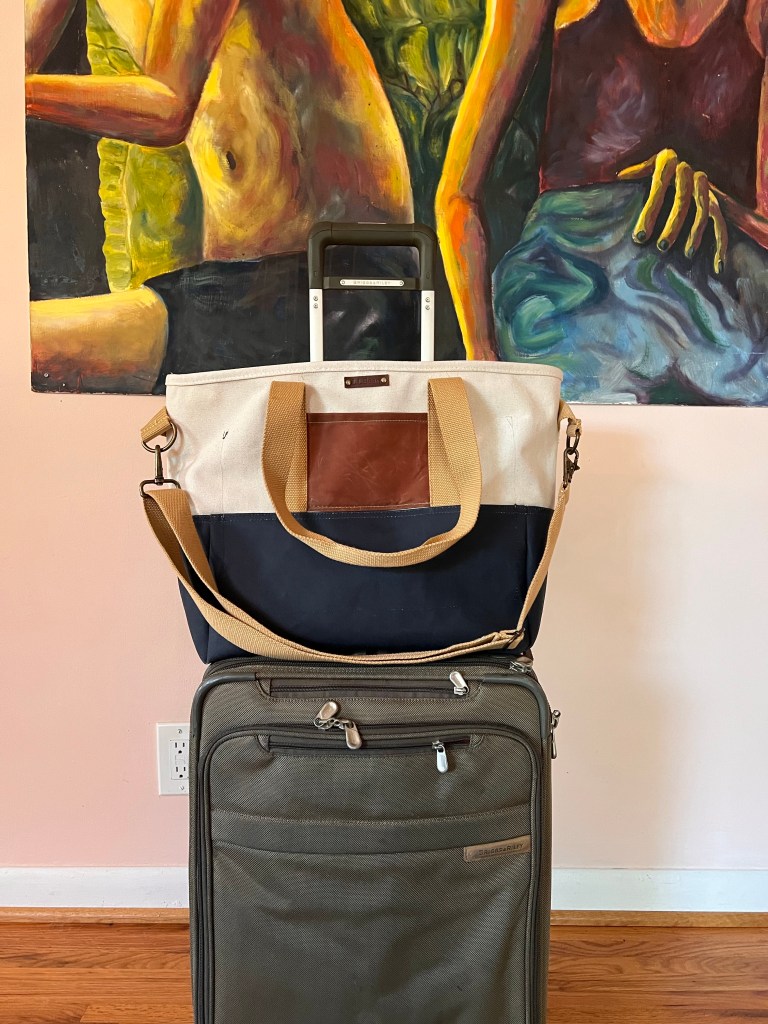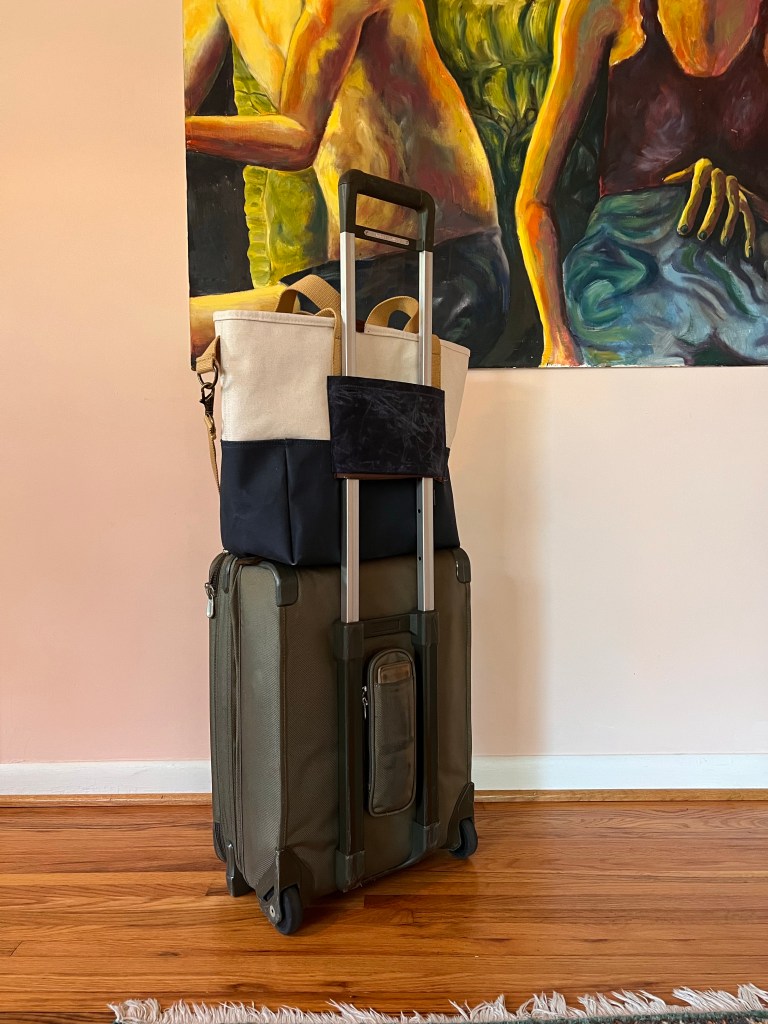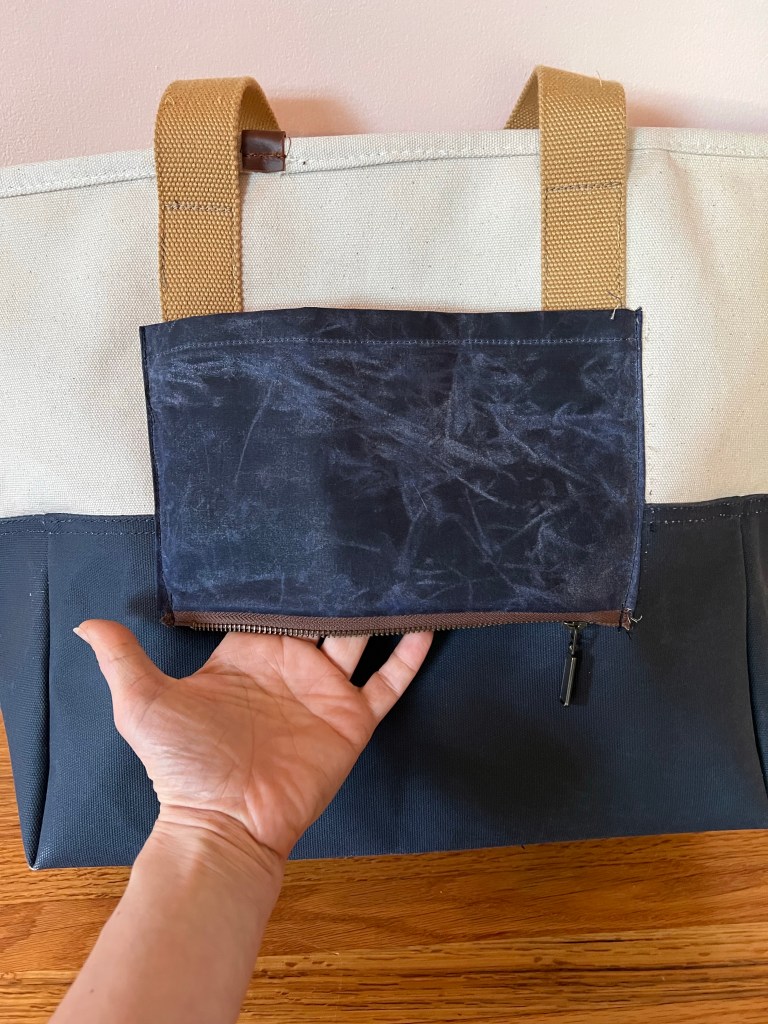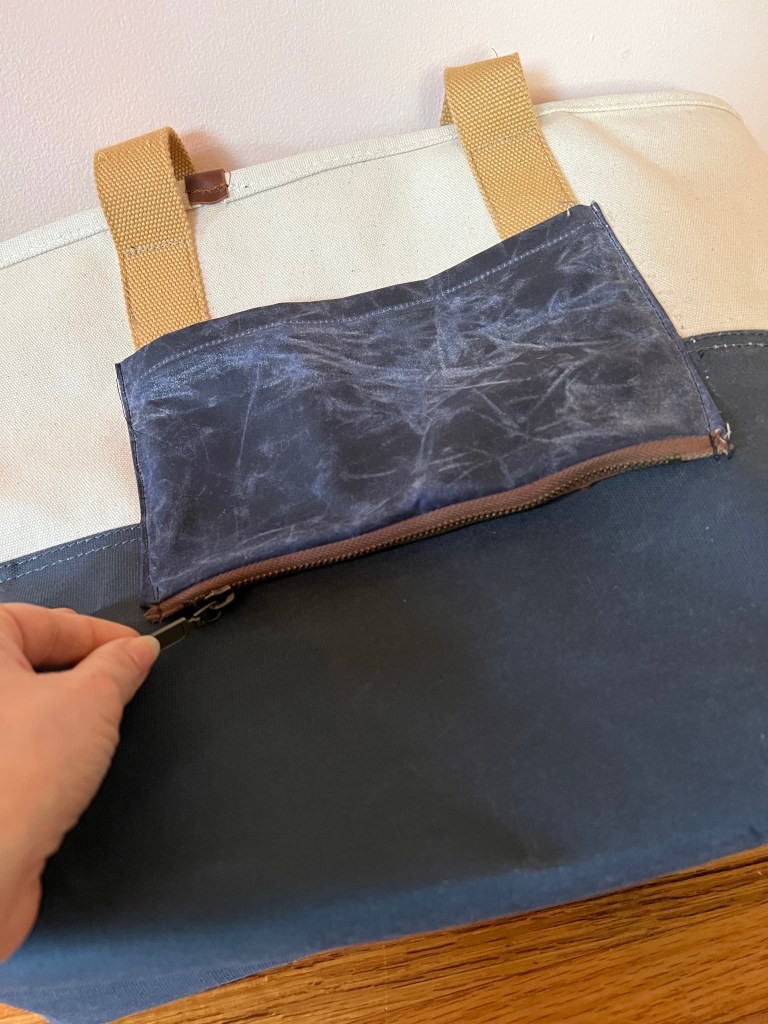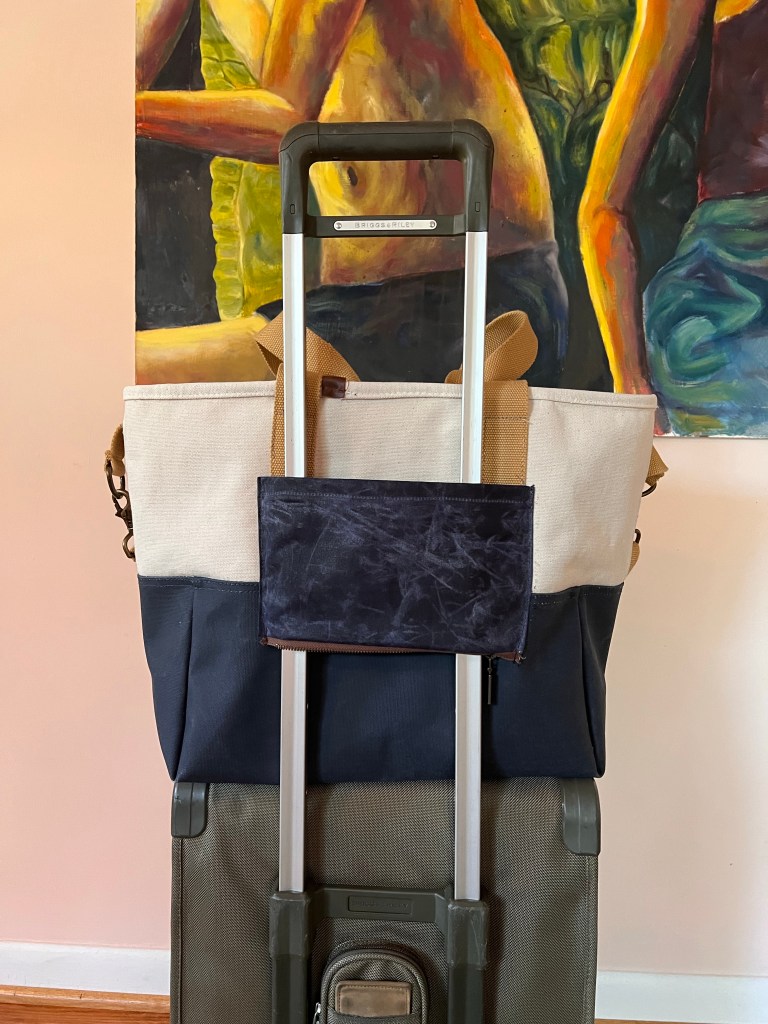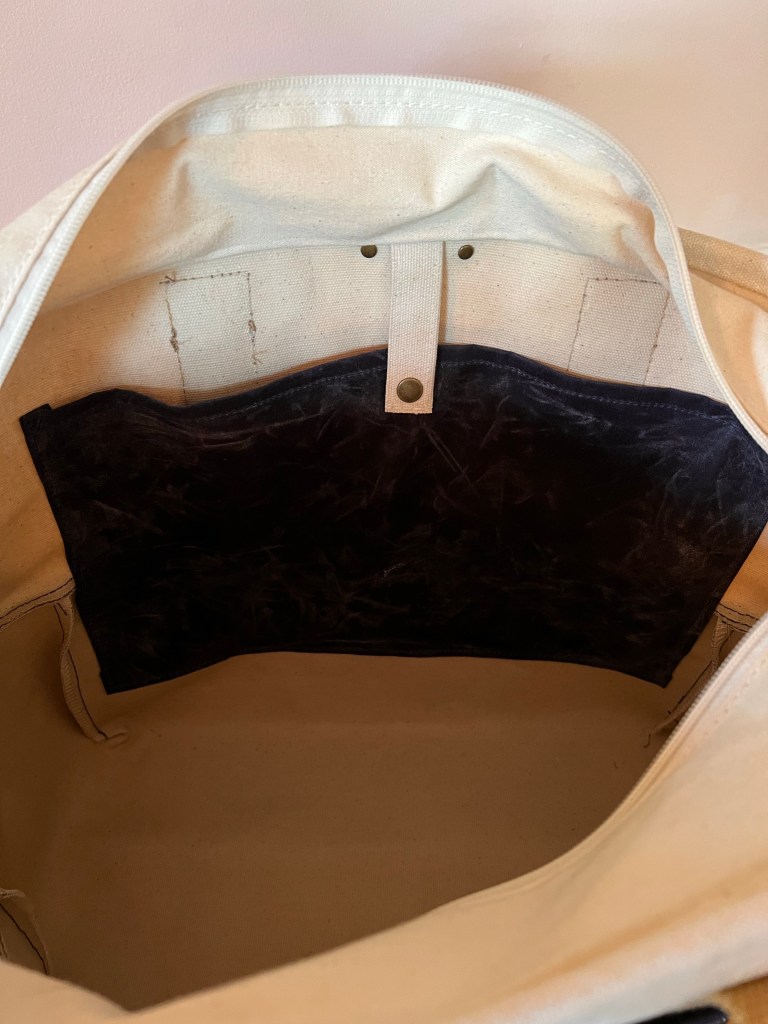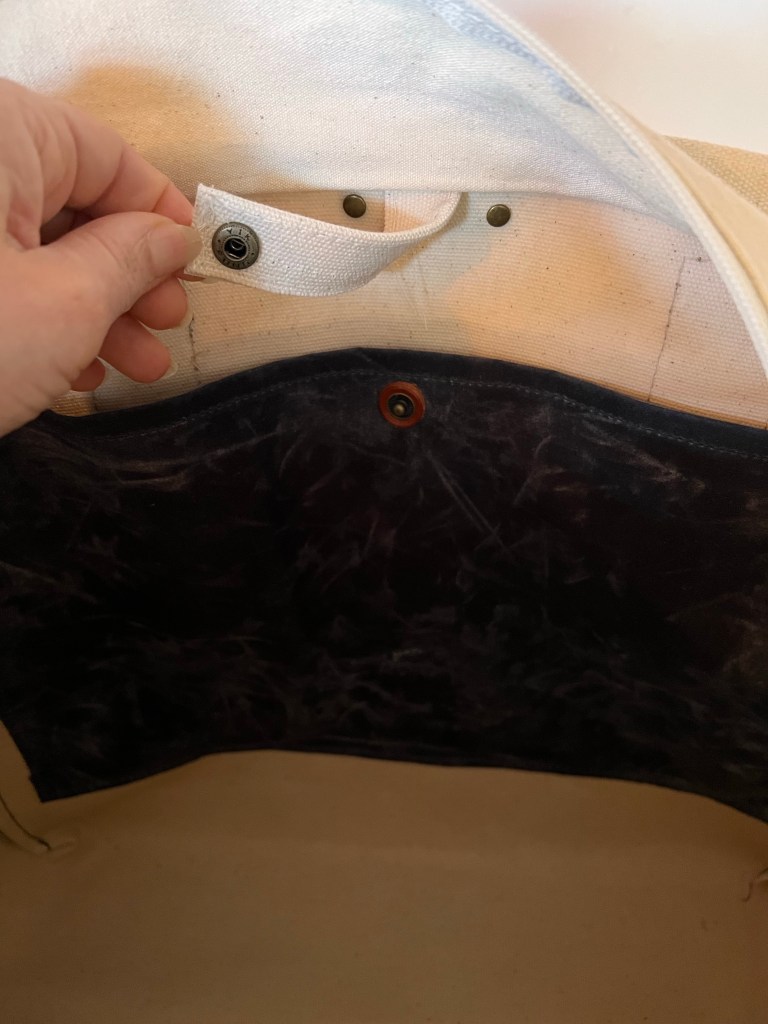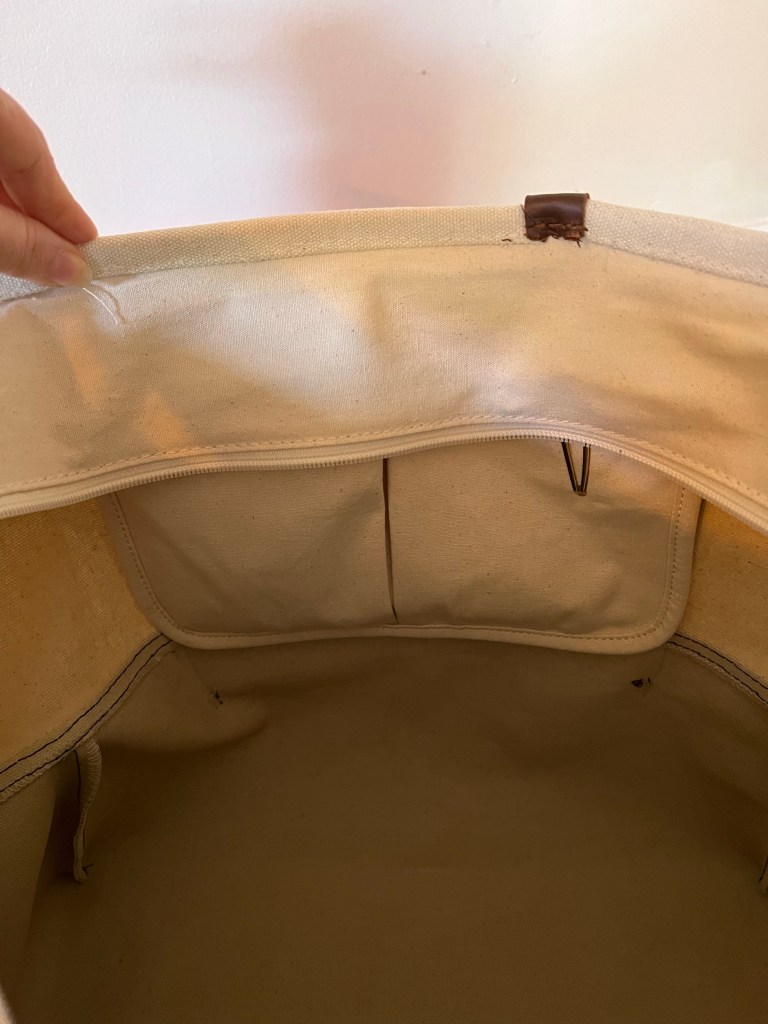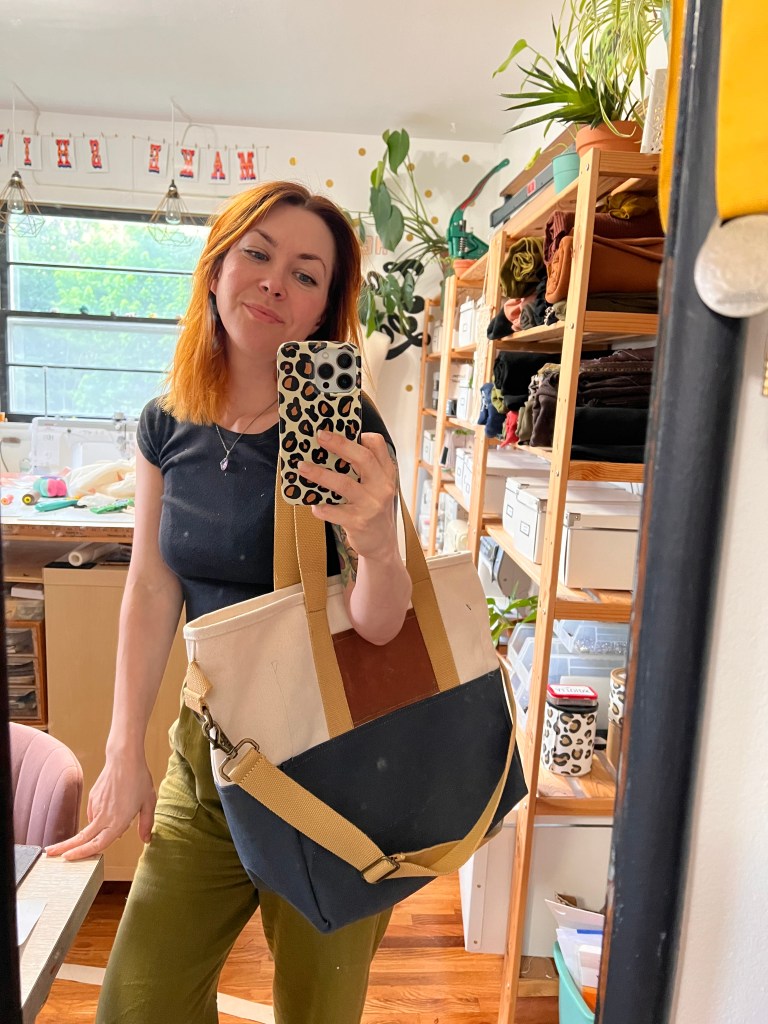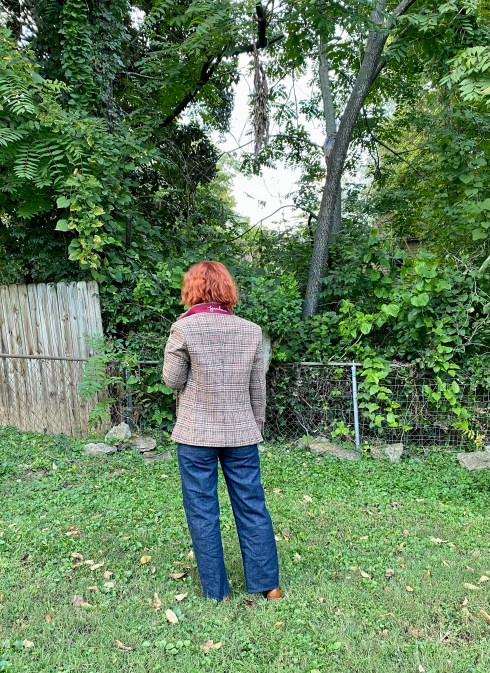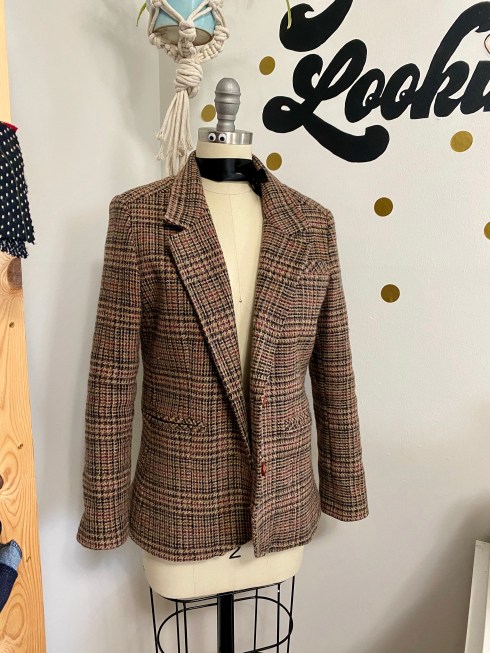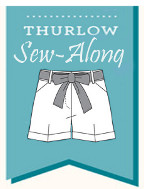I know what you’re thinking: “Who TF alters a tote bag?” Honestly, a lot of people asked me this – my students, my coworkers, my friends, myself. But, dammit, sometimes I wanna do weird things just to see how it turns out. And in this case, it was making this LL Bean Nor’easter Tote Bag 1000x better than straight off the rack.
Here is a photo of the bag as grabbed from LL Bean’s website. It’s a fine bag, very well made. It works great as it is. But I wanted to make it better, so I did.
I bought my tote from the LL Bean Outlet Store in North Hampton, NH. Fun fact: It’s right down the street from Pintuck & Purl, and I make Maggie take me there every time I’m in town for a workshop LOL. This time, I was determined to get a tote bag! I have a vacation coming up in July and I wanted a big ol’ tote bag to strap to my carry-on suitcase. Another fun fact about the LL Bean Outlet – you can buy mis-embroidered tote bags for about 30% off the cost. Which is how I ended up with Essie Kate’s bag.
Thanks, Essie Kate! Love u!
Apparently it is very New England to leave the wrong name on your bag, which I briefly considered, but I just love seam ripping too much. Off it went!
I did also consider just leaving it as “i ate” but the spacing was just too weird. Bye Felicia! I mean, Essie!
Like I said, the bag is great as-is – it is very roomy, has a zipper across the top, and a nice hanging pocket bag that includes a zippered pocket and 2 gusseted pockets. I liked that it included a detachable crossbody strap, in addition to the handles. The fabric is sturdy and heavy, and waterproof (both on the base and the interior). It was pretty close to what I was looking for. But after carrying it through the airport for my trip home, I made note of a few updates that would make it even better:
- An outside pocket on the front to stash my phone
- An slip-through panel on the back so I could attach it to my suitcase
- An interior pocket for my laptop so it doesn’t bounce around
- Also, the entire bag was just a hair too big. It needed to be about 2″ shorter – the height was a bit cumbersome for using the shoulder strap, and honestly just looks disproportionally large next to me, in all my 5’2″ glory
And here it is post-alterations! Hooray!
Making these adjustments actually wasn’t very hard – other than trying to wrangle the bag under my sewing machine (I’m sure you can tell that it’s not my absolute neatest sewing ever – which I’m fine with!). It only took a couple of hours and I was able to use materials that I already had on hand, so my only investment was purchasing the bag itself.
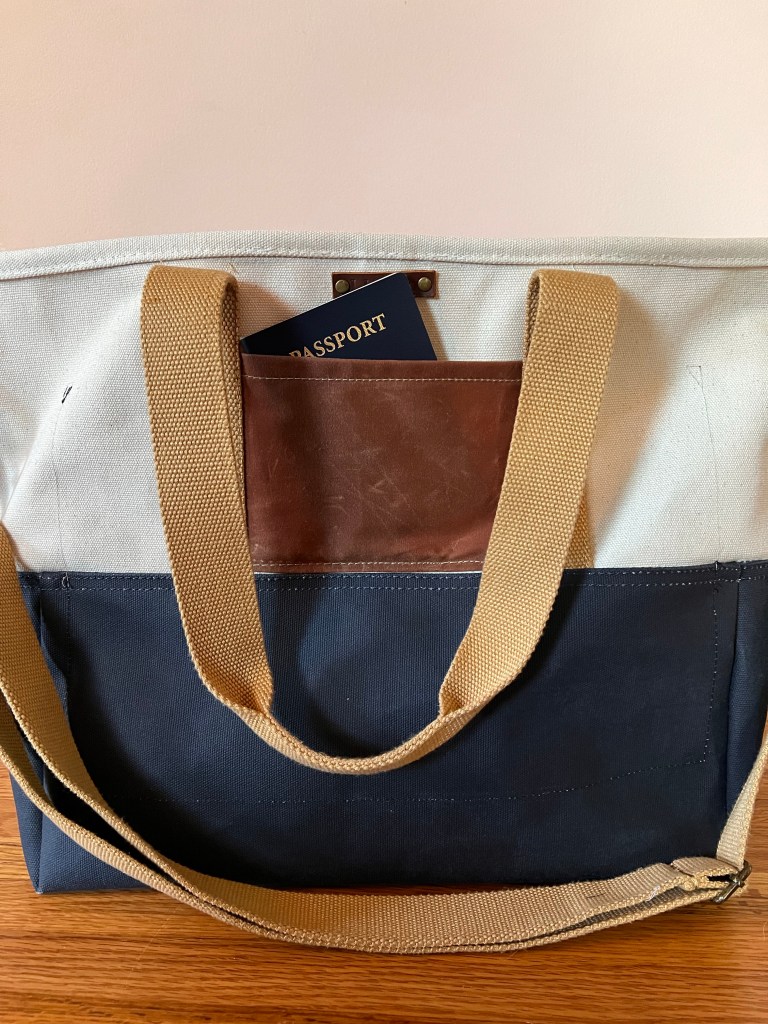
The front pocket was made using waxed canvas – I had the tiniest piece, it was actually used to keep closed a roll of wax canvas that came in a Klumhouse Kit. I saved it because it was a nice color, and it looks so good with this bag! To attach the pocket, I just ripped off the straps and inserted the pocket edges, then sewed the straps back down. I debated whether to insert it in the bottom fabric seam as well, but there was so much finishing and topstitching that I decided to just topstitch it down right above that seam instead.
I’m actually pretty stinkin proud of that back slip-through panel – I added a zipper to the bottom (which was a neat idea I nabbed from one of my Briggs & Riley luggage pieces) so it can also function as a pocket when it’s not attached to my suitcase! The fabric is waxed canvas that I bought from the Crafty Gemini ages ago, and the zipper is from an old Niizo bag kit. The topstitching does look a bit sloppy at the bottom – again, I was sewing this on a fully formed (and quite rigid) bag, so I’m cutting myself some slack here. It’s fine.
Here is a poorly-lit photo of the interior laptop pocket (can you tell that I didn’t edit these photos at all?). I sized it to fit my laptop and used more of the navy waxed canvas. I did have to be mindful of when I was sewing on white vs navy, and change my bobbin thread accordingly. I originally did not add a closure, but I hate a floppy laptop pocket (you think you’re putting something in the bag and it goes in the pocket, UGH). I used leftover canvas from the bag’s outer, and folded it up to create a tab, which got sewn into the top binding. I added a snap – the tab was sturdy enough to accommodate the snap with no extra reinforcement, but my navy waxed canvas is pretty thin so I supported it with a leather washer (this also came from a Klumhouse kit, and is absolutely 100% where I got the idea from). I use an industrial snap setter so I had no problem getting a strong snap through those layers. I like this closure because it keeps the pocket closed when not in use, doesn’t show from the outside, and also doesn’t risk scratching my laptop.
This is unrelated to my project and not something I added to the bag – but I wanted to share the free hanging pocket, which is really nice! The zipper gusset folds over the open pockets when the bag is not zipped, so your stuff doesn’t fall out 🙂 I thought that was pretty cool! PS sorry about all those threads that I need to snip!
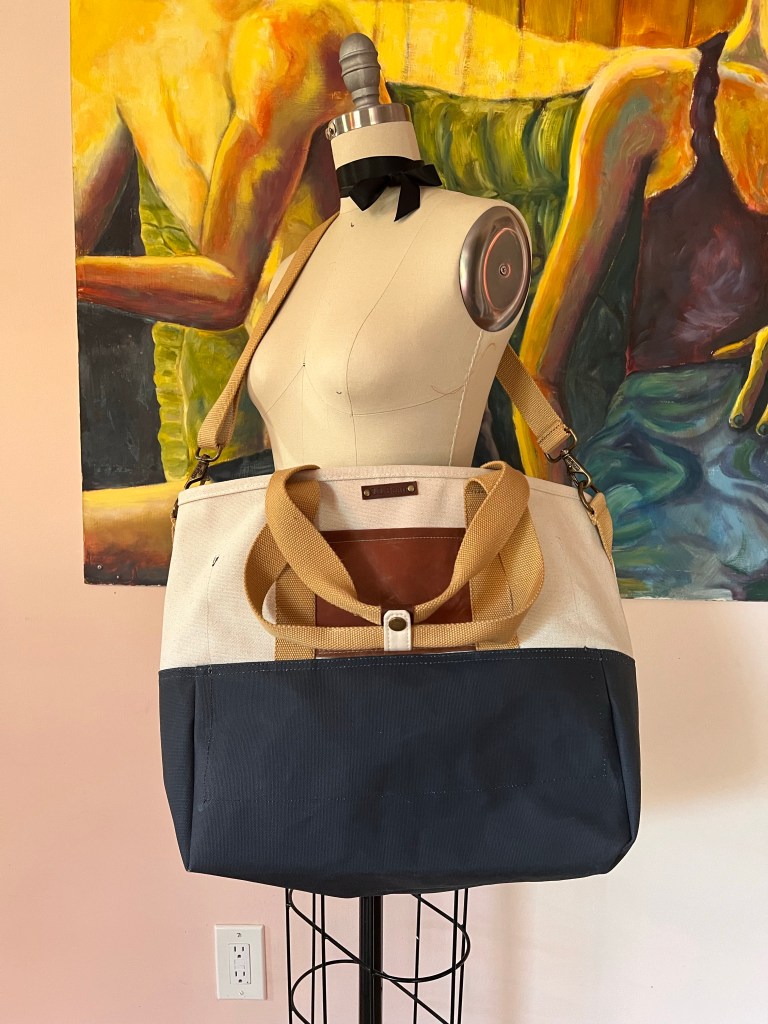
Ok, I don’t have any photos of shortening the bag because that was a pretty straight forward process. The top is finished with a canvas binding, so I pulled that off with my seam ripper, which also removed the zipper gusset and the free hanging pocket. I also had to open the side seams a bit so I could lower the crossbody strap D rings, because they are close to the top and would get cut off. I removed 1.75″ from the top, moved down the D rings, put the gusset and pocket back in, and re-attached the binding. Like I said, the only hard part was wrangling it under then machine (which honestly felt like a walk in the PARK after sewing those pockets in haha).
I used my Janome HD9 machine, which is not an industrial but it can sew a pretty powerful stitch. I don’t know if a standard sewing machine could handle this, the layers got super thick especially when attaching the binding. I equipped with a size 18 needle and 30wt Gutterman thread – except the white topstitching, I actually didn’t have the right weight thread in that color so I doubled up 2 spools of 100wt! (this is a fun little tailoring trick I pull out of my hat when I have a rush jeans hem and don’t have the right thread color – or time to order. NO ONE can tell. Sometimes I even make my own ~custom colors~ by using two different spool colors lmao).
Aaaaaand that’s it! That’s the story how I altered a tote bag. I’m super duper happy with the changes – it’s a better size for me, and the extra pockets are highly useful. We shall see how well it fares on my international trip but in the meantime I’ll be bringing it with me to upcoming classes!
Speaking of upcoming classes – I’ve got a few more dates for my Alterations class scattered throughout the year (including one in October at Pintuck & Purl – you could walk to the LL Bean Outlet and nab yourself a discounted tote to attack!). I say this often, but I can’t say it enough – alterations does not *have* to be pants hems and boring shit. Basically anything that has been sewn can be altered. A big part of the fun of this class is bopping around ideas and changing things up in the most glorious and unconventional ways (although if you want to learn pants hems and other standard alterations – I can teach you that, too!). Read more about my alterations class here in this post, and check my upcoming dates here!

